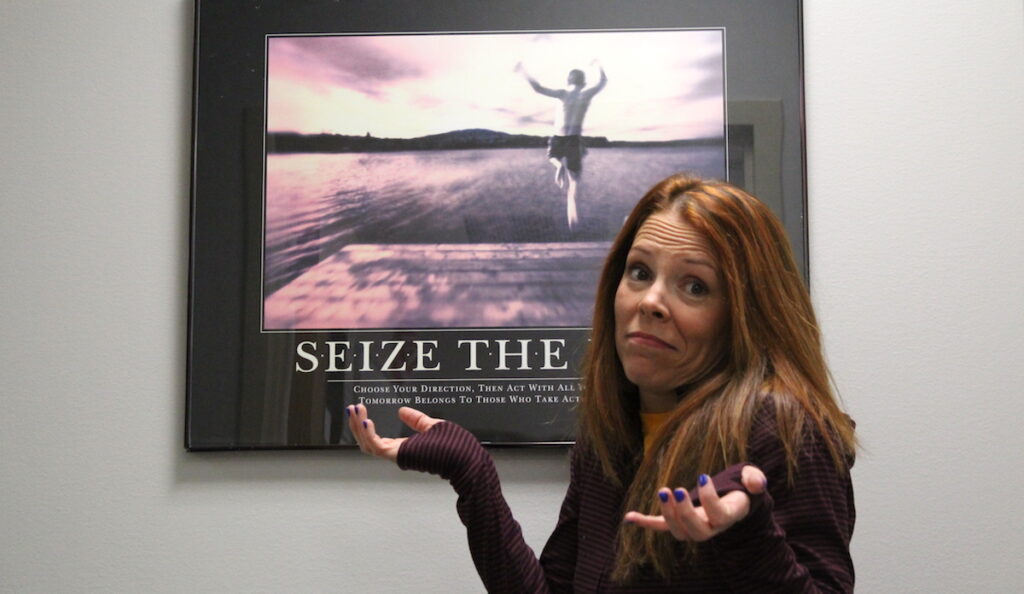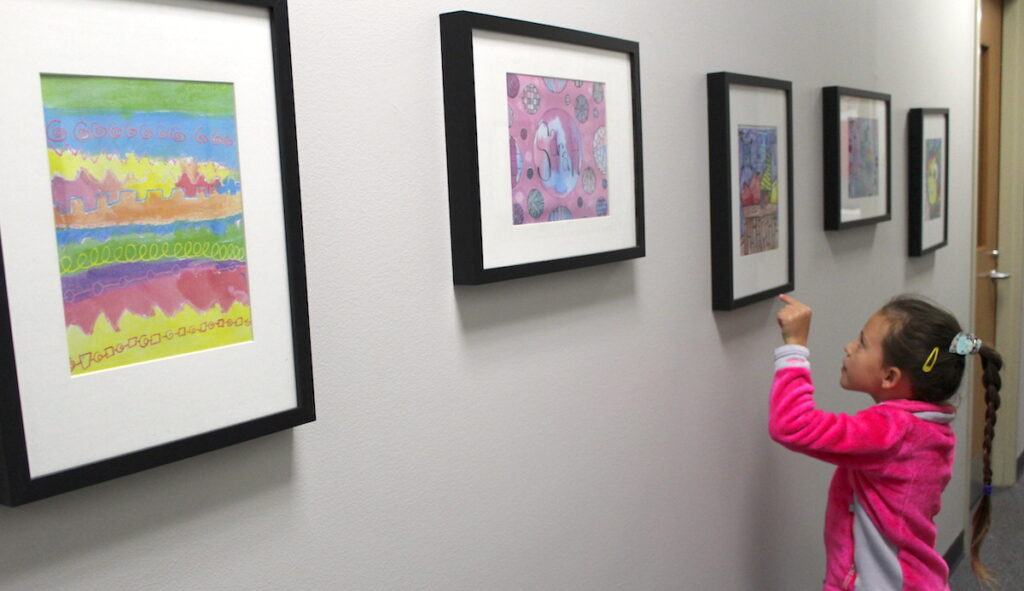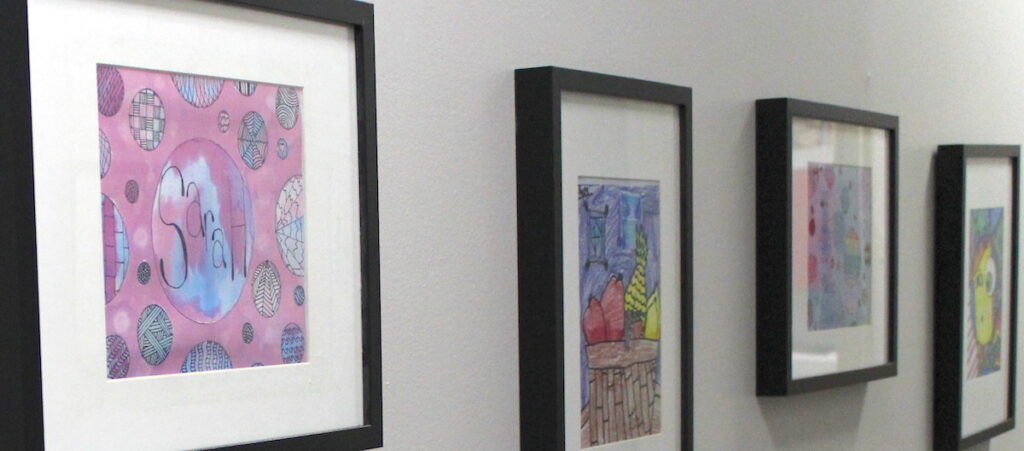Have you ever considered hanging student work in the school office? If not, you should!
While most of us already maintain a series of bulletin boards and display cases, these are generally in student-centered areas like hallways and common spaces. Placing work in other environments can motivate students and positively involve your building’s administrative team. Plus, student artwork is a much better choice than those ubiquitous motivational posters.

Perhaps it is time to partner with your boss and hang a “Principal’s Gallery” in your school!
A “Principal’s Gallery” changes the status quo by placing student art in an area of the school traversed by the administration, faculty, and community members. In this way, the work also becomes an important advocacy tool for your program.
Here are 4 reasons you should start a principal’s gallery in your school.

1. It’s an affordable and easy way to “move beyond the bulletin board.”
In my case, setting up a “Principal’s Gallery” was fairly simple. My principal was excited about the possibility of having student artwork to view all day, every day. To help support the idea, he allocated a small amount of money from his budget. With those funds, I researched and purchased a set of ten inexpensive frames to hold student artwork on a rotating basis.
When choosing frames, I considered four factors:
- Size
- Cost
- Durability
I looked for frames with hardware that could stand up to a lot of wear and tear as I constantly rotated artwork. - Appearance
I looked for frames that also contained mats to save myself some time and create a professional look.
2. It gives your principal a way to become an active part of your program.
Whether you rotate the work in your gallery monthly, quarterly, or once a year, your school’s administration is going to see these benchmark exemplars of your curriculum more frequently. Rather than attending a “once a year” art show, they will become familiar with what is happening in your classroom on a more regular basis. You could even enlist your principal to help select the artwork to be featured!

3. It provides a venue to recognize and encourage your high achievers.
Don’t get me wrong; I am a “hang everyone’s work” type of elementary art teacher. Whether it is my hallway bulletin boards or the school art show, I hang what everyone makes, because I believe it sends an important implied message.
But, I also want to find proactive ways to give recognition and validation to my most accomplished students. Our art students are beginning to make decisions about their artistic identity, which will affect the academic courses they take in middle school and high school. I want my message to be clear: I recognize your effort, and I think you should stick with art!
4. It sends an unspoken message about the role and value of art in your school.
Great art programs have a way of making themselves noticeable within a school. The value and importance of art can be seen and felt as soon as you enter a building because the art teacher is making their program visibly known. Typically, the front office is the area community members see on their first visit to a school. It is where first impressions are made. So, put your kids’ work out there! Claim your wall space and proclaim loudly, “This school has an art program and its talented students create fabulous work!”
So why not approach your principal today? Replace those old motivational posters with beautifully framed student artwork. Not only will it benefit both your office and your art program, but it will make your students proud!
How do you involve your principal in your art program?
What non-traditional spaces do you use for art displays?
Magazine articles and podcasts are opinions of professional education contributors and do not necessarily represent the position of the Art of Education University (AOEU) or its academic offerings. Contributors use terms in the way they are most often talked about in the scope of their educational experiences.





